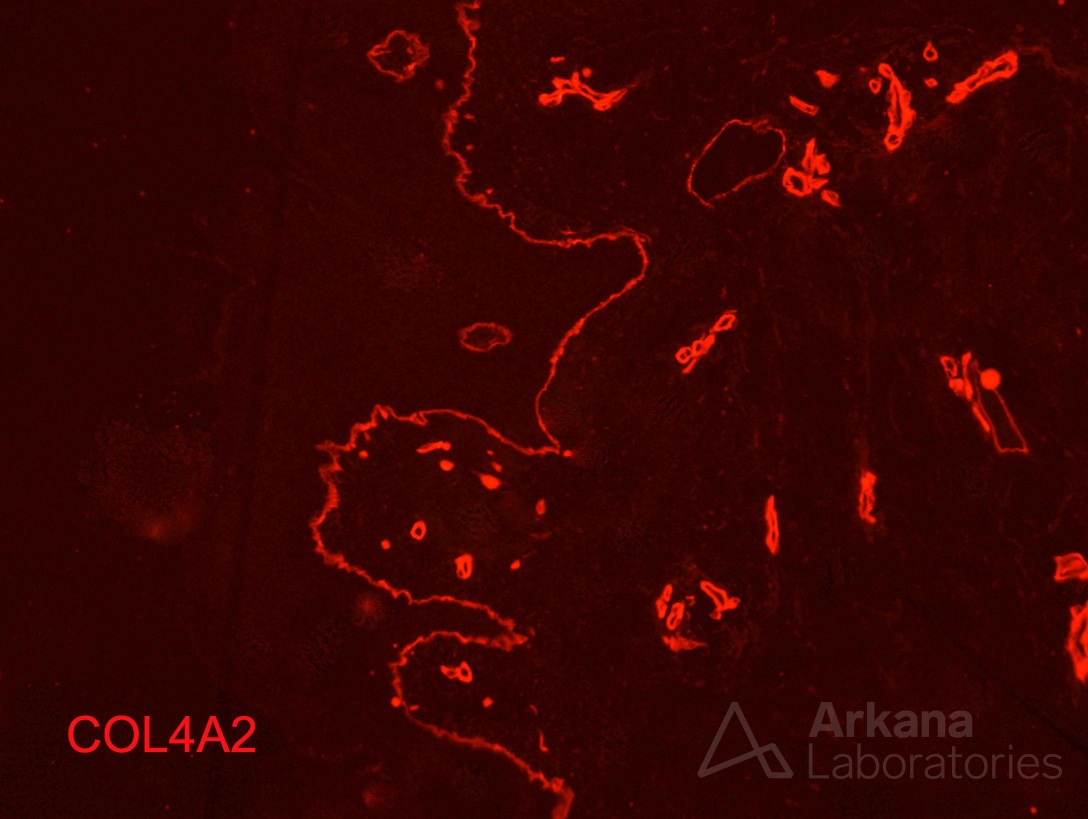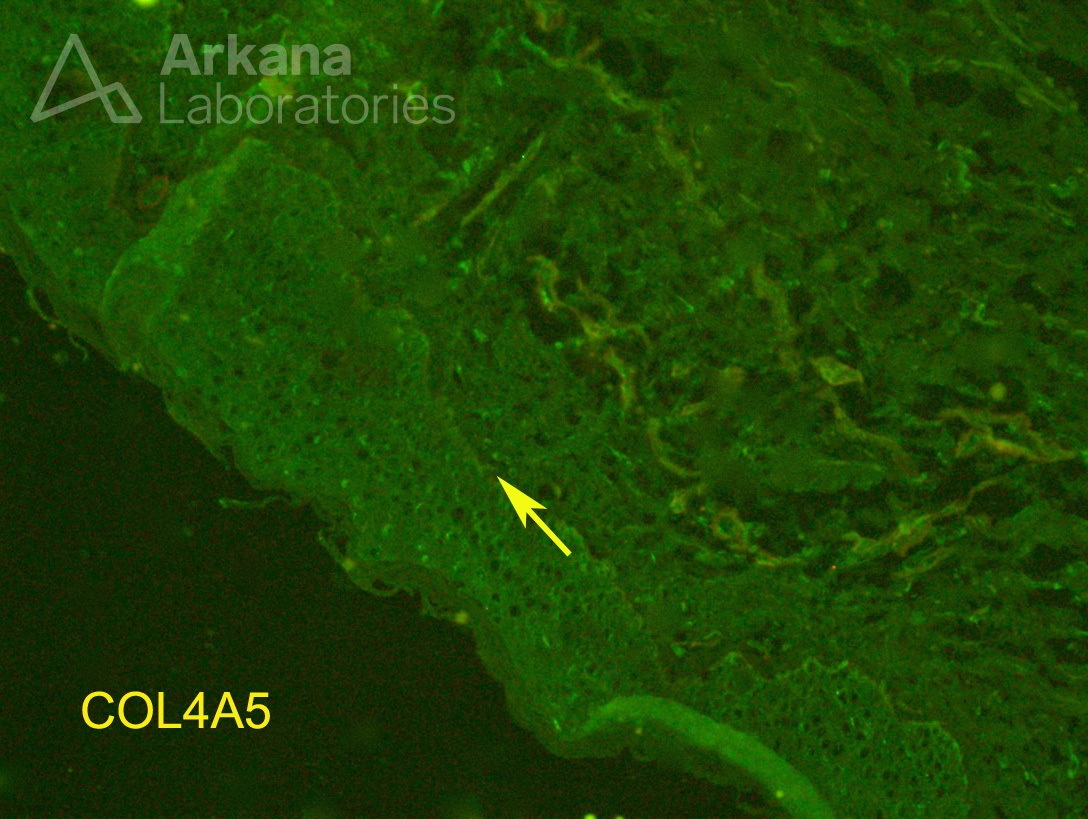The most common form of Alport syndrome shows an X-linked dominant inheritance pattern and is caused by mutations in the COL4A5 gene located in the Xq22 region that encodes for the alpha5 chain of type IV collagen. The glomerular basement membrane consists of alpha1, alpha2, alpha3, alpha4 and alpha5 chains, whereas no alpha6 chains are present. Within the glomerular basement membranes, the alpha3, alpha4, and alpha5 form a network of collagen. Abnormalities, even in one of the chains, can alter this network formation. However, there will be persistence of the alpha1 and alpha2 chains. As a result, diagnosis of Alport is possible by immunohistochemistry when the mutation in the collagen IV gene results in truncation or alteration of the protein to a degree that it is no longer detectable by antibodies directed against the protein. Antibodies against alpha2 can be used diagnostically to confirm tissue integrity when alpha5 chain staining is negative. The alpha5 chain abnormality responsible for X-linked variant of the Alport syndrome is also potentially detectable in the basement membrane underlying the epidermis. This provides a less invasive way to diagnose patients with suspected Alport syndrome than renal biopsy. The case pictured here is an example of a skin biopsy diagnostic of X-linked Alport syndrome. The epidermal basement membrane is negative for the alpha 5 chain of collagen IV (arrow). Positive staining for the alpha2 chain of collagen IV, which is present in all basement membranes, confirms tissue integrity.
Quick note: This post is to be used for informational purposes only and does not constitute medical or health advice. Each person should consult their own doctor with respect to matters referenced. Arkana Laboratories assumes no liability for actions taken in reliance upon the information contained herein.



